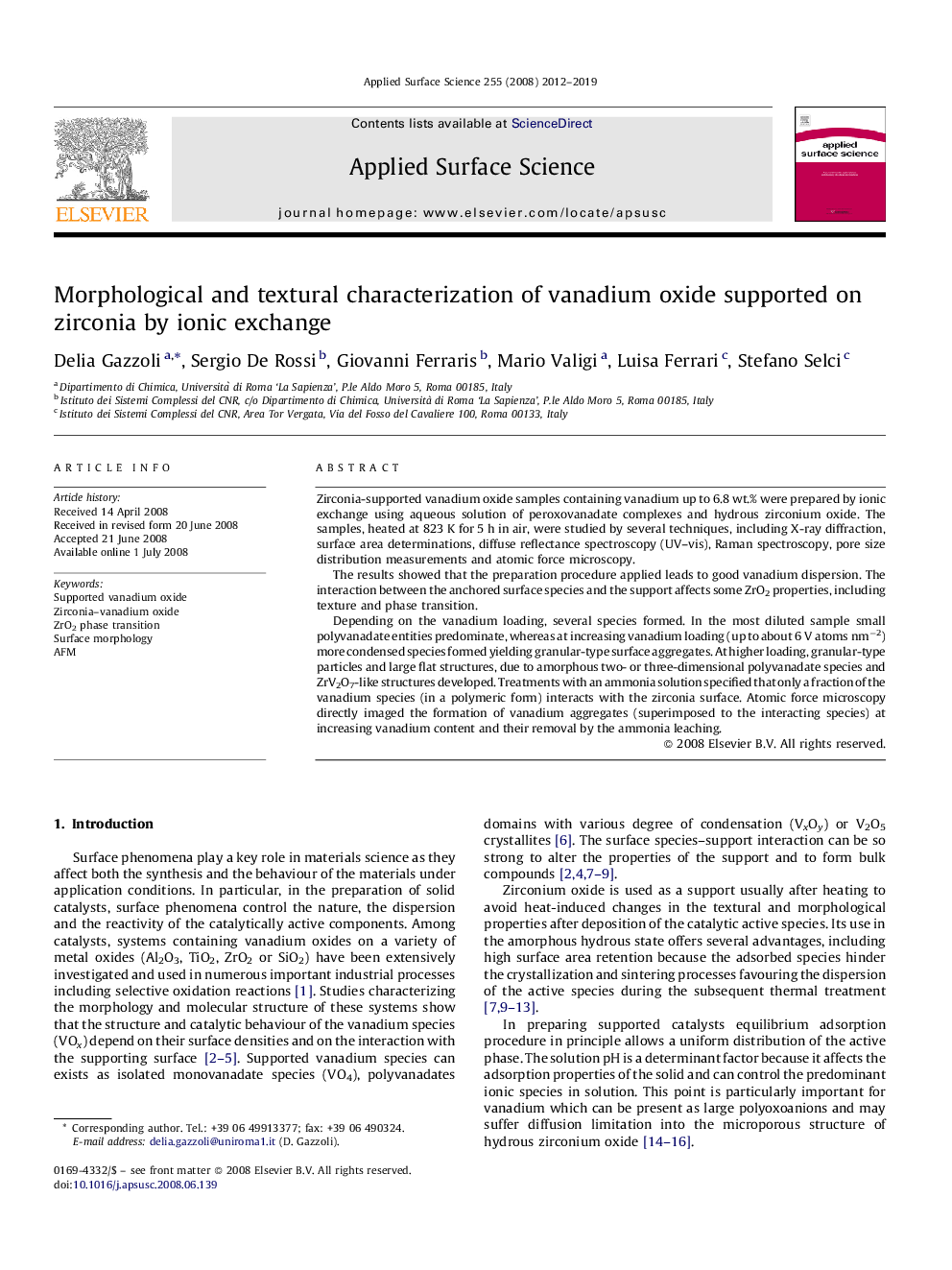| Article ID | Journal | Published Year | Pages | File Type |
|---|---|---|---|---|
| 5363208 | Applied Surface Science | 2012 | 8 Pages |
Zirconia-supported vanadium oxide samples containing vanadium up to 6.8 wt.% were prepared by ionic exchange using aqueous solution of peroxovanadate complexes and hydrous zirconium oxide. The samples, heated at 823 K for 5 h in air, were studied by several techniques, including X-ray diffraction, surface area determinations, diffuse reflectance spectroscopy (UV-vis), Raman spectroscopy, pore size distribution measurements and atomic force microscopy.The results showed that the preparation procedure applied leads to good vanadium dispersion. The interaction between the anchored surface species and the support affects some ZrO2 properties, including texture and phase transition.Depending on the vanadium loading, several species formed. In the most diluted sample small polyvanadate entities predominate, whereas at increasing vanadium loading (up to about 6 V atoms nmâ2) more condensed species formed yielding granular-type surface aggregates. At higher loading, granular-type particles and large flat structures, due to amorphous two- or three-dimensional polyvanadate species and ZrV2O7-like structures developed. Treatments with an ammonia solution specified that only a fraction of the vanadium species (in a polymeric form) interacts with the zirconia surface. Atomic force microscopy directly imaged the formation of vanadium aggregates (superimposed to the interacting species) at increasing vanadium content and their removal by the ammonia leaching.
